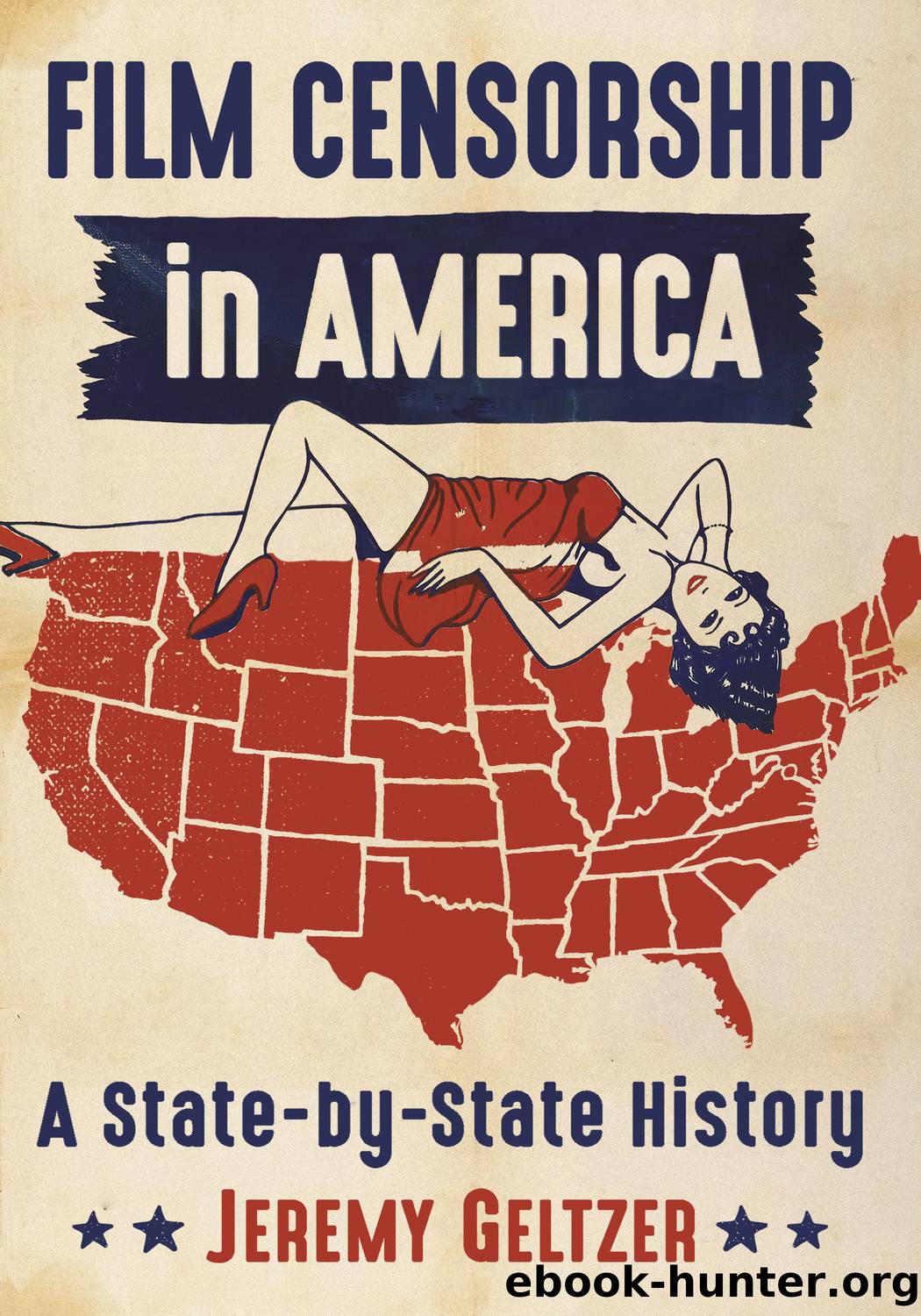Film Censorship in America by Jeremy Geltzer

Author:Jeremy Geltzer
Language: eng
Format: epub
Publisher: McFarland & Company, Inc.
Published: 2017-11-02T16:00:00+00:00
* * *
North Carolina
* * *
Nature can take on a sinister power along the Outer Banks of North Carolina. Off the coast of Hatteras, so many ships have sunk that the region has been called “the Graveyard of the Atlantic.”1 In 1587 the British colonial village of Roanoke disappeared. The mystery of the outpost has never been conclusively determined; it seems to have been swallowed back into the surrounding wilderness. The movies have shown audiences that revenge can be an unstoppable force of nature, and the epicenter of that storm is the North Carolina location of Cape Fear.
Gregory Peck starred in and produced Cape Fear (1962), which was based on a book called The Executioners. He claims that looking for a new title, he ran his finger along the Eastern Seaboard and chose Cape Fear based on the location’s evocative name. It fit. The film, a black-and-white thriller, saw two men revert to their barbaric animal nature. Peck played an attorney; Robert Mitchum, a recently released criminal named Max Cady. Cady blames his imprisonment on his counsel and returns to wreak havoc. Mitchum’s slit-eyed and slow menacing delivery brings a tension that pushes Peck to his limits. As the embodiment of evil, Cady is a sexual predator. One woman is drawn into his ominous orbit, declaring, “You’re an animal. Coarse, lustful, barbaric.” While shooting the film in Savannah, Georgia, Mitchum was on edge. As a young man he had been arrested for vagrancy and sentenced to work on a Georgia chain gang.2 Returning to the scene of the crime thirty years later put the actor ill at ease, which worked for the film, recalled the film’s director, J. Lee Thompson.3
As aggressive as Cape Fear was, the film was toned down by the censors of the day. The head of the Production Code Administration, Geoffrey Shurlock, advised Thompson that the film walked a fine line: “There must be no suggestion that Cady is out to rape the girl. You must be careful of violence to women, violence in any form.” In one scene, Mitchum eyeballs his nemesis’s young daughter scrubbing a rowboat. Shurlock flagged the scene, commenting the actor “looks too lasciviously at the girl.”4
Cape Fear is a film about a psychotic rapist in which the word “rape” is never uttered. Because of the Production Code, Cady’s crimes could only be referred to vaguely and ambiguously. The film also represents another important moment in American cinema. In Cape Fear, audiences sided with an everyman moved toward vigilante violence to protect the safety of his family. The vigilante thriller would become a popular genre in the coming years with Dirty Harry (1971), Billy Jack (1971), and Death Wish (1974), but Cape Fear stands at the beginning of this violent lineage.
Twenty-nine years later, Martin Scorsese revisited the windblown peninsula in his remake of Cape Fear (1991). Scorsese took the underlying insinuation and made it explicit, with Robert De Niro stepping into Mitchum’s role. In Scorsese’s version, Cady threatens the budding sexuality of his enemy’s daughter, literally becoming the Big Bad Wolf on a high school stage.
Download
This site does not store any files on its server. We only index and link to content provided by other sites. Please contact the content providers to delete copyright contents if any and email us, we'll remove relevant links or contents immediately.
The Kite Runner by Khaled Hosseini(5081)
Gerald's Game by Stephen King(4570)
Dialogue by Robert McKee(4321)
The Perils of Being Moderately Famous by Soha Ali Khan(4169)
The 101 Dalmatians by Dodie Smith(3451)
Story: Substance, Structure, Style and the Principles of Screenwriting by Robert McKee(3394)
The Pixar Touch by David A. Price(3361)
Confessions of a Video Vixen by Karrine Steffans(3240)
How Music Works by David Byrne(3182)
Fantastic Beasts: The Crimes of Grindelwald by J. K. Rowling(2994)
Harry Potter 4 - Harry Potter and The Goblet of Fire by J.K.Rowling(2984)
Slugfest by Reed Tucker(2936)
The Mental Game of Writing: How to Overcome Obstacles, Stay Creative and Productive, and Free Your Mind for Success by James Scott Bell(2844)
4 - Harry Potter and the Goblet of Fire by J.K. Rowling(2650)
Screenplay: The Foundations of Screenwriting by Syd Field(2572)
The Complete H. P. Lovecraft Reader by H.P. Lovecraft(2511)
Scandals of Classic Hollywood: Sex, Deviance, and Drama from the Golden Age of American Cinema by Anne Helen Petersen(2463)
Wildflower by Drew Barrymore(2441)
Robin by Dave Itzkoff(2381)
